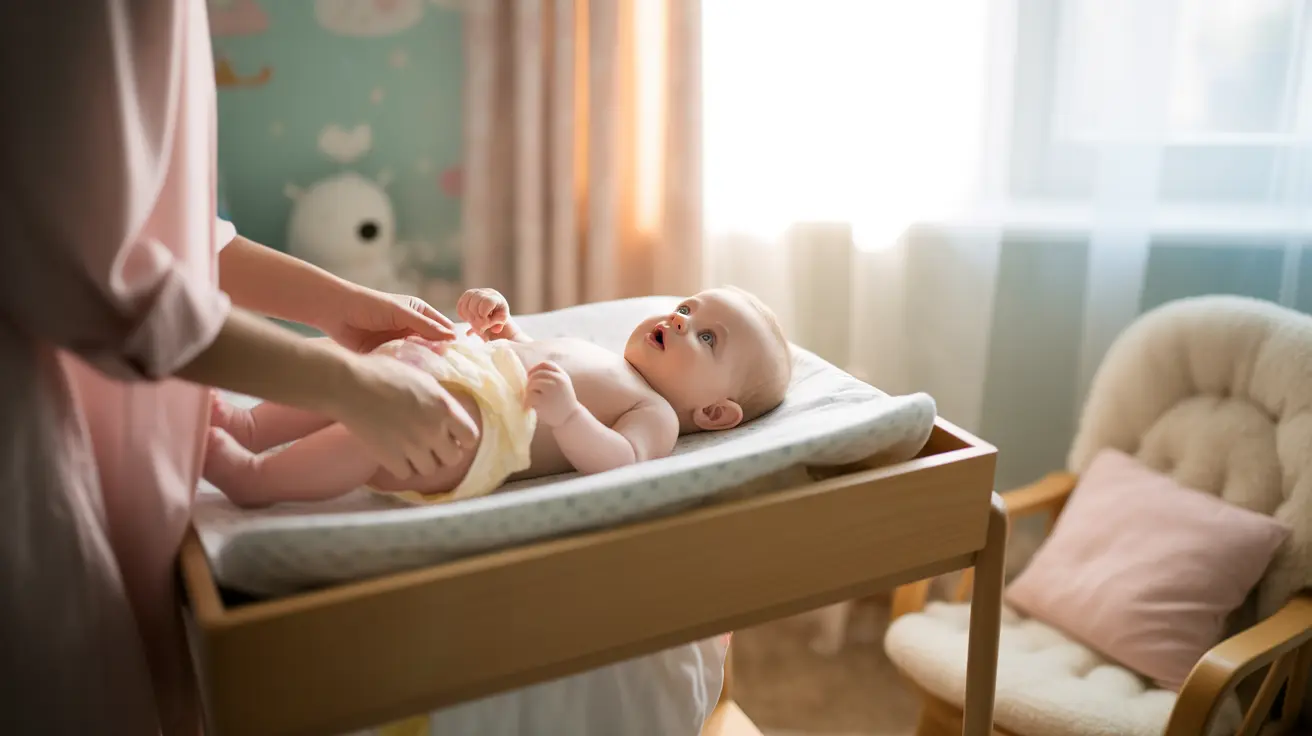For new parents, the timing of diaper changes in relation to feeding can significantly impact their baby's comfort and sleep quality. Understanding when to change your baby's diaper - before or after feeding - is crucial for establishing an effective care routine and ensuring your little one's wellbeing.
This comprehensive guide will help you determine the best timing for diaper changes, share essential safety tips, and provide practical advice for both daytime and nighttime changes.
The Ideal Timing for Diaper Changes
Generally, it's recommended to change your baby's diaper before feeding. This approach helps prevent interruptions during or immediately after feeding, when your baby might be drowsy or ready for sleep. However, you should always check your baby's diaper after feeding as well, as feeding often stimulates bowel movements in infants.
Before Feeding Benefits
Changing your baby's diaper before feeding offers several advantages:
- Ensures your baby starts feeding in clean, dry conditions
- Helps prevent unnecessary wake-ups if your baby falls asleep while feeding
- Reduces the risk of diaper rash from sitting in wet diapers during feeding
- Creates a predictable routine for your baby
After Feeding Considerations
Sometimes, changing after feeding becomes necessary:
- When your baby has a bowel movement during or after feeding
- If the diaper becomes heavily wet during a long feeding session
- For babies with reflux who need to stay upright after feeding
Frequency of Diaper Changes
Newborns typically need 8-12 diaper changes per day, while older babies may require 6-8 changes. Pay attention to your baby's individual needs and patterns to establish an appropriate changing schedule.
Essential Supplies for Diaper Changes
Before starting any diaper change, ensure you have these items within reach:
- Clean diapers
- Gentle wipes or warm washcloth
- Diaper rash cream
- Clean changing pad
- Hand sanitizer
- Spare clothes (in case of accidents)
Safe Diaper Changing Practices
Follow these safety guidelines for every diaper change:
- Always keep one hand on your baby when using a changing table
- Clean from front to back, especially for girls
- Ensure the diaper isn't too tight or too loose
- Wash your hands before and after changing
- Keep diaper supplies within your reach but away from your baby
Frequently Asked Questions
Should I change my baby's diaper before or after feeding for the best comfort and hygiene?
It's generally best to change your baby's diaper before feeding to ensure comfort during feeding and prevent sleep disruption if your baby dozes off. However, always check after feeding as well, since feeding often stimulates bowel movements.
How often should I change my newborn's diaper during the day and at night?
Newborns typically need 8-12 diaper changes per day. During the night, change the diaper if it's soiled or heavily wet. You may not need to change every wet diaper during nighttime unless your baby is prone to diaper rash.
What is the safest way to change a baby's diaper to prevent infections?
Always clean from front to back, especially for girls, use clean supplies for each change, and wash your hands thoroughly before and after. Keep your baby secure on the changing surface and ensure the new diaper fits properly.
How can I avoid waking my baby too much when changing diapers at night?
Keep lights dim, use warm wipes, maintain minimal interaction, and change the diaper efficiently. Consider using nighttime diapers with higher absorbency to reduce the frequency of changes.
What are the essential supplies I should have ready before changing a diaper?
Essential supplies include clean diapers, wipes or washcloths, diaper rash cream, a clean changing pad or surface, hand sanitizer, and spare clothes. Having everything within reach before starting makes the process quicker and safer.




